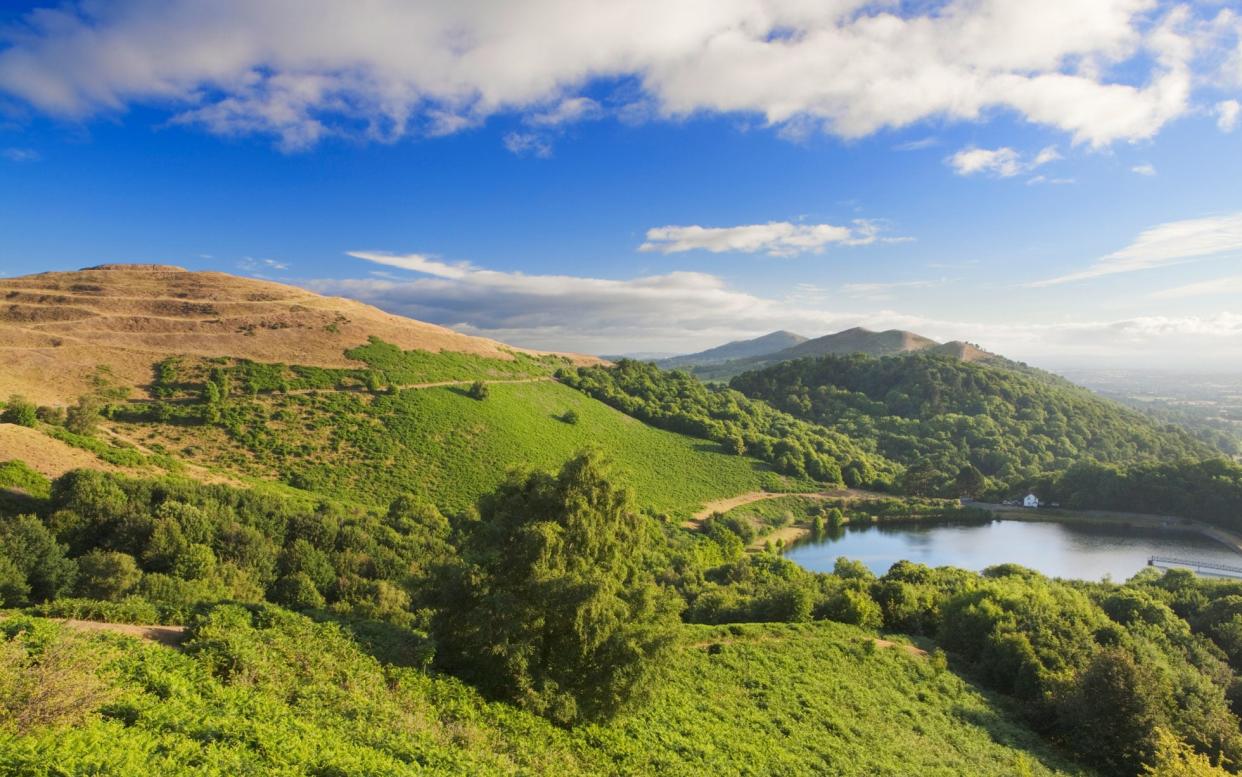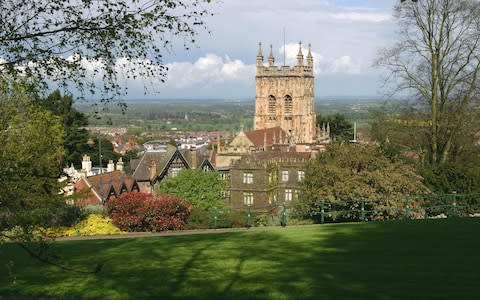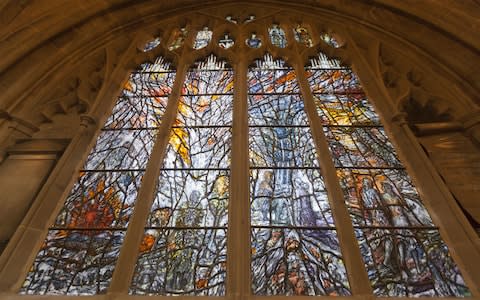Why Malvern is Great for a weekend break

Few towns have quite so much to gush about as Great Malvern. The Worcestershire spa town, famed for its natural spring water, has been attracting visitors since the medieval period, with the establishment of a Benedictine monastery.
Water-cure seeking reached its peak in the 19th century when middle-class families – and Charles Darwin, desperate to restore his young daughter Anne’s health – came to the foot of the Malvern Hills for a hydrotherapeutic hit. News of the town’s charms – and the extension of the railway from Worcester Malvern Link in 1859 – drew in working-class crowds from the Black Country and as far as Manchester.
It was noted at the time that Great Malvern had become crowded with “the most curious specimens of the British shopkeeper and artisan on an outing”. Today, far fewer day trippers make the journey to the end of the railway line in the shadow of the hills (on a good day, from the summit you can see the Black Mountains one way and the Cotswolds the other).

Those that do are conspicuous by their hiking boots and shorts. Stop any local (the ones in normal shoes) and they will reel off a list of reasons Malvern is Great; the schools, the low crime rate, the outdoor pursuits. Tucked away as it is, too far to commute to London, the pace of life here is as well-preserved as so many of the town’s other cherished artefacts. For Malvernites are simply too spoilt for claims to fame.
As one resident, newly relocated from London with his young family, tells me: “There’s no shortage of tenuous associations in Malvern.” The following are in no particular order: William Langland’s 14th-century poem Piers Plowman was inspired by the Malvern Hills; Malvern is the home of the Morgan Motor Car Company; The gas lamp at the base of the town’s 99 steps is where C S Lewis found his inspiration for the opening description of Narnia. Lewis’s great friend J R R Tolkien found similar inspiration in the surrounding countryside; Charles Darwin’s daughter Anne is buried in Great Malvern Priory churchyard; Haile Selassie stayed at the Abbey Hotel in Malvern in the Thirties; Lea & Perrins Worcestershire Sauce began life here; the Queen favours still Malvern water; Cher Lloyd of X Factor fame grew up on the Elgar Estate, named after another musical local.
Are these the 20 best views in Britain?
There are more and myriad, but the last brings us to the most important. Edward Elgar loved it here. He may have been born in Worcester, but it was the hills of Malvern that he walked and that made his musical heart soar.
It is said that the opening notes of his much-loved “Nimrod” line up with the shape of the hills. And today his presence hangs over Great Malvern. Near to the Mount Pleasant pub, on Belle Vue, where he would cycle for a pint, is his statue. My friend Joel, a proud Malverner (there is no other type) says his grandfather spoke of seeing Elgar drinking in the pub as an old man.
The mysterious appearance of a draft manuscript of Elgar’s Enigma Variations (which had reportedly gone missing from a museum in 1994) on Antiques Roadshow this month caused ripples of excitement in the composer’s adopted town. Malvern is otherwise light on controversy – although a recent swingers’ festival held at the Three Counties Showground caused collective “frowning”, says one local. Not for them such epicurean thrills. They prefer to take it slow, roaming the hills and basking in Malvern’s resplendent history. I suggest you do the same.

The hike
St Ann’s Well and Café is on a popular path up the slopes of the Malvern Hills and an essential watering hole (Malvern water flows freely from an elaborately carved water spout) for those heading up to the Worcestershire Beacon. The spring is named after Saint Anne, the maternal grandmother of Christ and the patron saint.
The church
The remains of the 11th century Benedictine monastery make up some of the early parts of Great Malvern Priory, now a large parish church. Take note of the 15th-century stained glass, misericords and medieval floor and wall tiles.
The pub
There are plenty of pubs in the centre of Great Malvern, but if you’ve still some stretch in your legs, head to the Nag’s Head, close to Malvern Link, for hearty food and a lovely country vibe.
Pub walks | Routes that start and end at a characterful inn
The bookshop
Trading since 1954, The Malvern Bookshop on quaint Abbey Road has five rooms of second-hand and antique books. It’s advisable to wait until after reaching the top of the hills before buying any large tomes.
The lunch spot
Mac and Jac’s, a family run café-deli on Friar Street, serves up locally sourced food and vegetarian friendly options. Sit inside the 17th-century building, or bag a table outside and gaze up at the hills.
The museum
The tiny Malvern Museum, located in the Priory Gatehouse, packs in the local history, much like the town itself.
Win a luxury holiday worth up to £80,000
The shop
The cluster of antiques shops on Worcester Road make it a destination for curio collectors. Although as yet no Elgar original manuscripts have washed up, daytrippers from the Cotswolds regular drive up to take advantage of Worcestershire prices.
The theatre
The first Malvern Drama Festival, which took place in 1929, was dedicated to George Bernard Shaw and planned by Sir Barry Jackson. Malvern Theatres continues to be a feeder theatre for the West End. Look out for dates by the Malvern Concert Club – founded in 1903 by Sir Edward Elgar.

